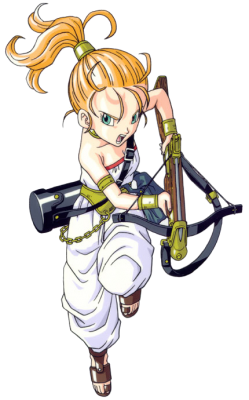 You know that innocent and beautiful fairy tale princess, with the tricked out dress and the power to summon woodland creatures? The one with a tendency to get kidnapped, but who always ends up happily ever after with her prince charming?
You know that innocent and beautiful fairy tale princess, with the tricked out dress and the power to summon woodland creatures? The one with a tendency to get kidnapped, but who always ends up happily ever after with her prince charming?
Yeah, that’s not this princess.
A rebellious princess would just as soon puke if she were any of those things. She hates being royalty–she’d rather be one of the common folk, or at least be out doing something (which is why she’s often involved in politics). She hates all those frilly dresses and tends to wear her hair in a tomboyish ponytail. Rather than wait for her white knight to save her, she’s much more likely to be an action girl in disguise, or at least something of a badass. When she grows up, she may become a lady of war. Invariably, she hates whatever marriage has been arranged for her and often scandalizes those of her class to marry for love (if she even marries at all).
As you might have already guessed, this trope is extremely common, not the least because the princess classic has largely been discredited (at least, outside of Disney). There’s a lot of variation on it too, with some stories featuring the rebellious princess as the love interest, and others showcasing her as the hero.
George R.R. Martin (Song of Ice and Fire) deconstructs the trope with Arya, who eventually becomes something of a sociopath, and Brandon Sanderson (Elantris) subverts it with Sarene, who very much has the personality but uses her royal position to her advantage. Frank Herbert (Dune) zigzags with Lady Jessica, who is undylingly loyal to the Atreides family but rebels against the Bene Gesserit. As you might expect, J.R.R. Tolkien plays it straight, not once but twice: Éowyn in Lord of the Rings, and Lúthien in The Silmarillion.
It transcends cultures, too. In Crouching Tiger, Hidden Dragon, Jen might not technically be royalty, but she is the governor’s daughter and she does reject an arranged marriage to run away and become a wandering warrior. And in classic RPGs, especially the old Japanese ones from Square, this trope is everywhere. The princess in the picture above is Marle from Chrono Trigger, who fits this trope to a T.
So why is this trope so prevalent nowadays? Probably because the modern feminist movement led us to discard most of our old-fashioned feminine ideals, as well as the characters who were held up as shining examples of them. That, and rule of drama. Everything ultimately comes down to rule of drama.
In my own work, Hikaru from Stars of Blood and Glory is an example of this trope, though she’s more of a president’s daughter than a hero or a love interest. She does have her own story arc, though, and I’ve got a sequel in the works with her as the main character. Scientists aren’t exactly royalty, but they do consider themselves elites in Genesis Earth, which means that Terra has echoes of this trope. And in Heart of the Nebula (as-yet unpublished), I’ve got a character who isn’t exactly rebellious, but she does qualify as a badass princess (though the society in question is a perfect techno-democracy and not a monarchy).
This is… is… insufficient. I want more.
Well, what do you have to add?